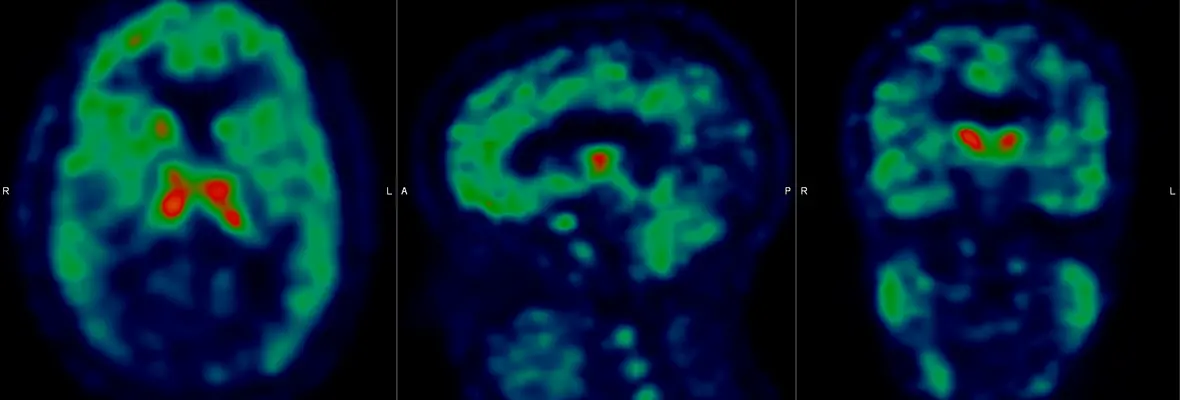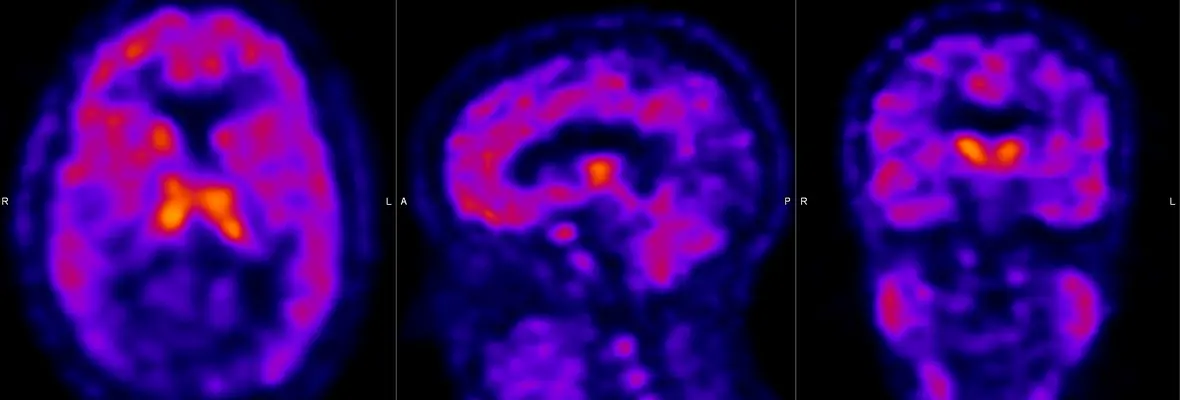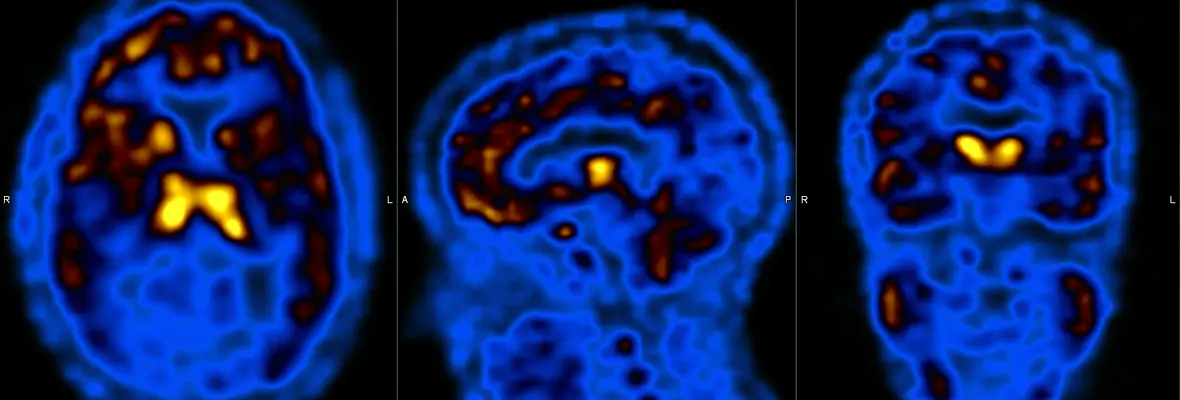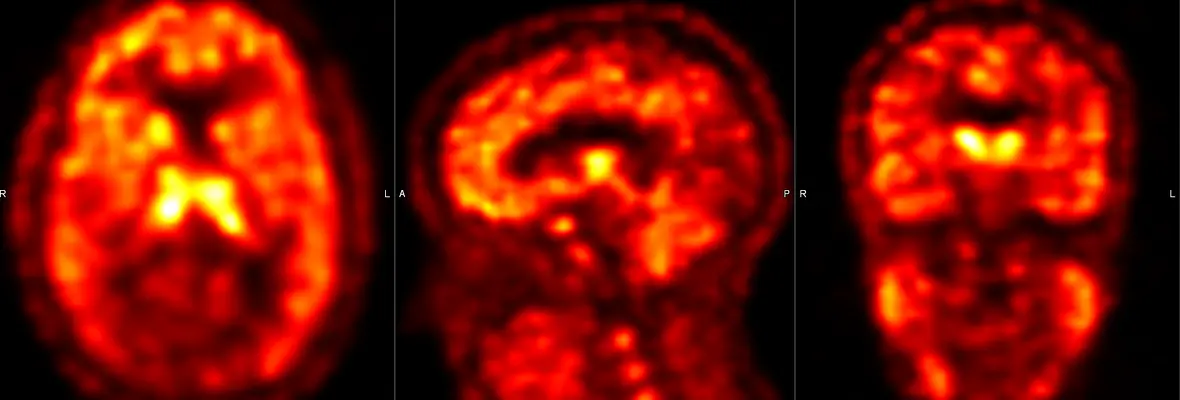Home
The Penn PET Addiction Center of Excellence (PACE) combines established strengths in clinical research on opioid use disorder with the technical expertise of a newly-invigorated PET program at the University of Pennsylvania and an established PET neuroimaging program at Yale University. Together, these outstanding resources will yield mechanism-level discoveries that are unique to PET and are critical for translating basic addiction science to the clinical care of patients suffering from opioid use disorder (OUD). This translation promises to substantially improve treatment outcomes for OUD and associated disorders and thereby reduce the high rates of morbidity and mortality associated with them.
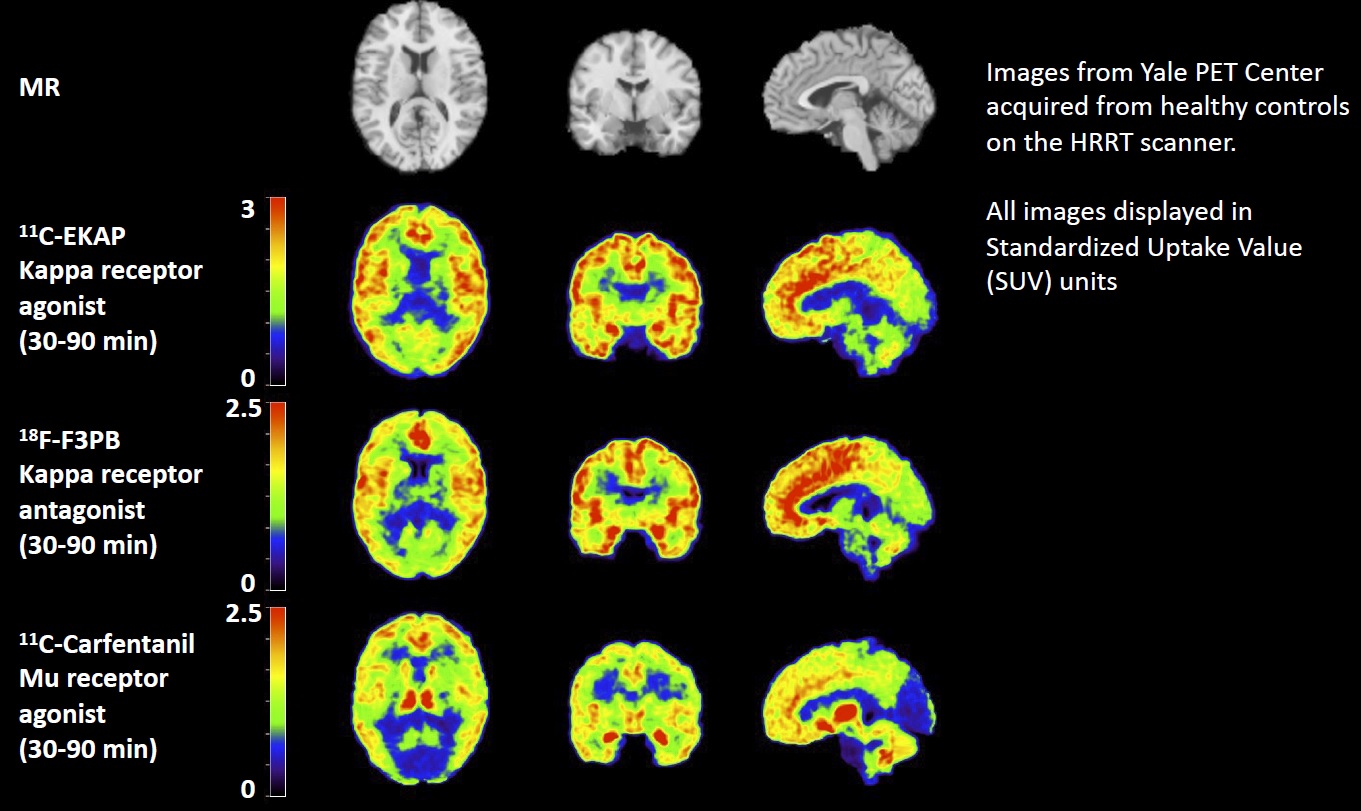
Images above demonstrate PET's ability to measure the three major types of opiate receptors.
The Penn PACE is comprised of the following five research cores: an Administrative Core, three Research Cores (Radiochemistry, Imaging, and Clinical), and a Pilot Project Core. The Administrative Core (AC) catalyzes, coordinates, and monitors the core infrastructure and pilot research within the PACE, including the process by which new pilot projects are solicited and selected and training initiatives. Strategic planning and evaluation ensure the quality and productivity of PACE science, fostering synergies across PACE. The Radiochemistry Core (RC) develops and produces radiotracers, provides quality control, maintains regulatory compliance and documentation, performs metabolite analysis, and oversees the sharing of research materials. The Imaging Core (IC) assists with the design and execution of PET imaging studies, including image processing and PET data analysis for all pilot projects. The Clinical Core (CC) supports the recruitment, assessment, and treatment of pilot study participants (both patients with opioid use disorder and healthy control subjects), maintains ongoing interaction with them to ensure study retention, and oversees the management and analysis of all clinical data. The Pilot Project Core (PPC) solicits, reviews, monitors, and evaluates all pilot projects.
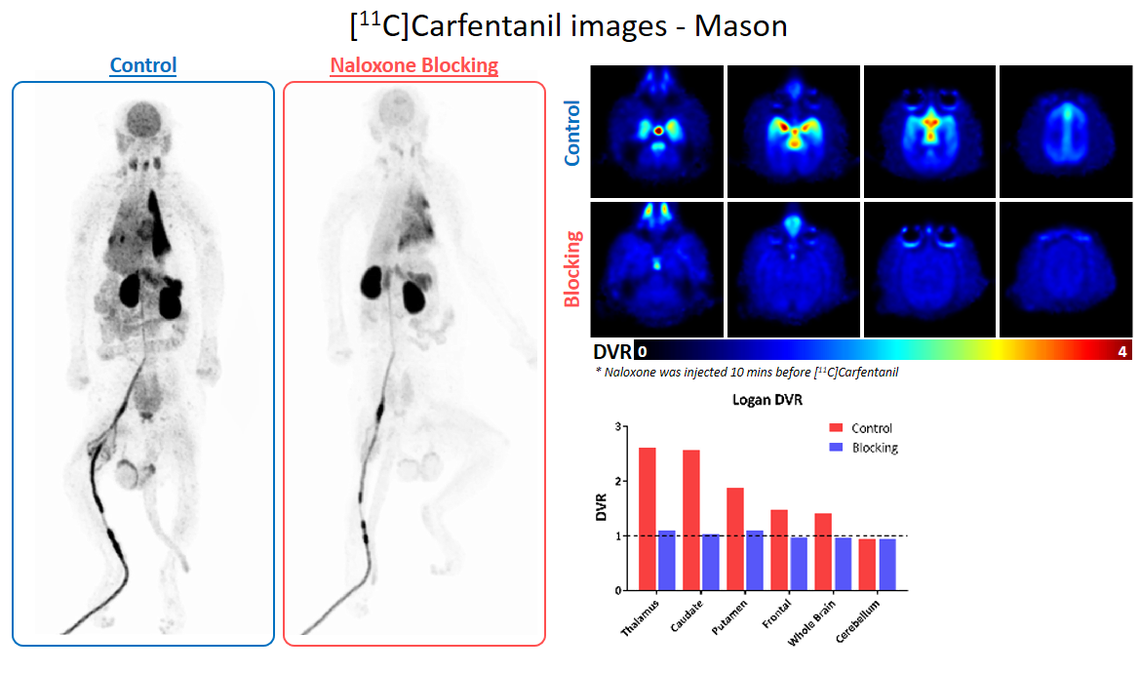
Images above show whole body non-human primate PET [C-11]carfentanil mapping of mu-opiate receptors with and without pharmacologic blocking using the PennPET Explorer instrument.


